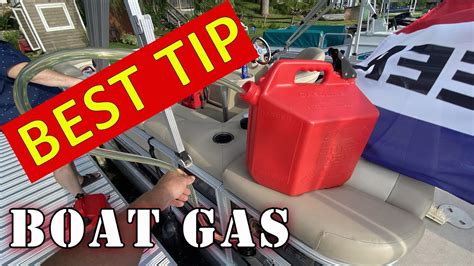How To Siphon Gas Out Of A Boat
Ronan Farrow
Apr 02, 2025 · 3 min read

Table of Contents
How to Siphon Gas Out of a Boat: A Safe and Effective Guide
Siphoning gas from a boat can be necessary for various reasons, from refueling to cleaning out old fuel. However, it's crucial to prioritize safety and follow the correct procedures to avoid accidents. This guide will walk you through the process, focusing on safe and effective techniques.
Safety First: Essential Precautions Before Siphoning
Before you even begin thinking about siphoning gas, remember that gasoline is highly flammable and its fumes are toxic. Never attempt this process near an open flame, sparks, or any source of ignition. Here are some crucial safety steps:
- Ventilation: Ensure adequate ventilation in the area where you'll be working. Open windows and doors to allow fresh air circulation.
- Personal Protective Equipment (PPE): Always wear appropriate PPE, including safety glasses or goggles, gloves resistant to gasoline, and a respirator to protect against fumes. A long-sleeved shirt and long pants are also recommended.
- Fire Extinguisher: Have a working fire extinguisher readily available, preferably a Class B extinguisher suitable for flammable liquid fires.
- Location: Choose a well-ventilated location away from any potential ignition sources. Avoid working in enclosed spaces or near anything that could create sparks.
- Spill Kit: Prepare a spill kit with absorbent materials in case of accidental spills. This will help contain any spilled gasoline and prevent environmental contamination.
Methods for Siphoning Boat Gas
There are several ways to siphon gas from a boat. Here are two common methods:
Method 1: Using a Siphon Hose
This is the most common method and requires minimal equipment.
- Materials: You'll need a clear vinyl tubing (food-grade is ideal), preferably at least 6 feet long, and two containers – one for the gas tank and one to receive the siphoned fuel.
- Process: One end of the tubing is placed firmly into the gas tank, making sure it reaches below the surface of the fuel. The other end is placed into the receiving container. Suck on the hose to initiate the siphon – don't worry, you're not actually ingesting the fuel. Once the flow starts, it will continue on its own due to gravity. Ensure the intake end remains submerged to maintain a continuous flow.
Important Considerations:
- Cleanliness: Ensure the tubing is clean to prevent contamination.
- Tubing Material: Do not use any tubing not explicitly designed for fuel transfer.
- Gravity: The siphon only works if the receiving container is positioned lower than the tank.
Method 2: Using a Transfer Pump
A manual transfer pump offers a safer alternative for siphoning fuel from a boat as it removes the need for mouth suction.
- Materials: You will need a manual fuel transfer pump that is rated for gasoline. These pumps usually have two hoses, one for intake and one for output.
- Process: Attach the intake hose to the boat's fuel tank and the output hose to your receiving container. Pump the handle to transfer the fuel. This method offers more control and reduces the risk of accidental spills or ingestion.
Important Considerations:
- Pump Compatibility: Always verify that the pump is rated for gasoline.
- Cleanliness: Regularly clean the pump after use.
Post-Siphoning Procedures: Clean Up and Disposal
Once the siphoning is complete, it’s crucial to clean up thoroughly and dispose of any waste properly.
- Secure the Hose: Carefully remove the hose from the tank and containers, avoiding spills.
- Wipe Spills: Immediately wipe up any spills with absorbent materials.
- Dispose of Waste: Properly dispose of gasoline waste at a designated hazardous waste collection facility. Never pour gasoline down the drain or onto the ground.
- Clean Equipment: Thoroughly clean all equipment used in the siphoning process.
By following these guidelines, you can safely and efficiently siphon gas from your boat, ensuring your safety and minimizing environmental impact. Remember, safety is paramount! If you're unsure about any aspect of this process, it's always best to seek the help of a qualified professional.
Featured Posts
Also read the following articles
| Article Title | Date |
|---|---|
| How To Register A Vehicle In South Dakota | Apr 02, 2025 |
| How To Secure Dog In Cargo Area Of Suv | Apr 02, 2025 |
| How To Prove Embezzlement | Apr 02, 2025 |
| How To Read Bike Odometer | Apr 02, 2025 |
| How To Sell A Gun In Illinois | Apr 02, 2025 |
Latest Posts
Thank you for visiting our website which covers about How To Siphon Gas Out Of A Boat . We hope the information provided has been useful to you. Feel free to contact us if you have any questions or need further assistance. See you next time and don't miss to bookmark.
